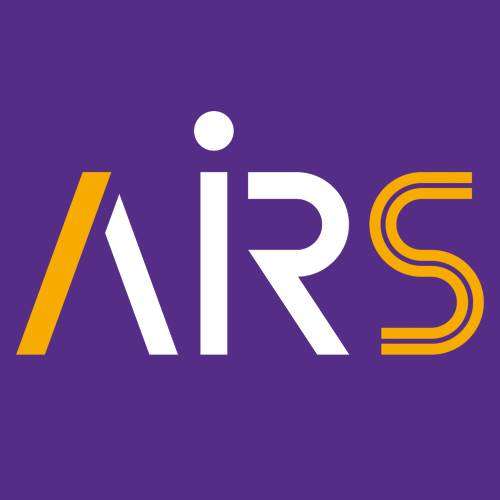

收起
活动内容收起
 模块化自重构机器人是近年来的研究热点。它是一种由同构单元组成的机器人系统,可根据不同任务和环境转变为合适的构型,特别适用于工作环境变化大、操作任务复杂的场合,在抢险搜救、反恐侦察、太空探索等领域有着广阔的应用前景。
模块化自重构机器人是近年来的研究热点。它是一种由同构单元组成的机器人系统,可根据不同任务和环境转变为合适的构型,特别适用于工作环境变化大、操作任务复杂的场合,在抢险搜救、反恐侦察、太空探索等领域有着广阔的应用前景。
为了加强科研成果和知识共享,促进本领域的学术交流与合作,助力理论创新和技术发展,AIRS in the AIR 五月系列活动邀请世界顶级学者围绕“模块化自重构机器人”开展讲座。本月讲座将带大家回顾模块化可重构机器人的发展历史,深入探讨目前技术发展面临的挑战与解决方案,并详细介绍如何通过研究,让机器人更好地服务于人类,以及推动社会发展。
*讲座主题3:
Investigating and assisting locomotion using modular robots/使用模块化机器人研究和辅助移动
摘要:
The ability to efficiently move in complex environments is a fundamental property both for animals and for robots, and the problem of locomotion and movement control is an area in which neuroscience, biomechanics, and robotics can fruitfully interact. In this talk, I will present how biorobots and numerical models can be used to explore the interplay of the four main components underlying animal locomotion, namely central pattern generators (CPGs), reflexes, descending modulation, and the musculoskeletal system. Going from lamprey to human locomotion, I will present a series of models that tend to show that the respective roles of these components have changed during evolution with a dominant role of CPGs in lamprey and salamander locomotion, and a more important role for sensory feedback and descending modulation in human locomotion. I will also present the Roombots project, a project in which we use self-reconfigurable robots to create an assistive environment for people who have limited mobility.
在复杂环境中高效移动的能力是动物和机器人的重要特性,而运动及其控制问题是神经科学、生物力学和机器人学的交叉领域。这次演讲将介绍如何使用仿生机器人和数值模型来探索动物运动的四个主要组成部分之间的相互作用,即中枢模式发生器(CPG)、反射、下行调制和肌肉骨骼系统。这里我将向大家展示一系列从七鳃鳗到人类运动的模型,从这些模型中可以看到,在进化过程中,这些部分的各自作用发生了变化,其中CPG在七鳃鳗和蝾螈运动中占主导地位,而在人类运动中,感觉反馈和下降调节起着更重要的作用。我还将介绍Roombots项目,在该项目中,我们使用自重构机器人为行动受限的人创造一个辅助环境。
嘉宾:

Auke Ijspeertis a professor at EPFL (the Swiss Federal Institute of Technology in Lausanne, Switzerland), IEEE Fellow, and head of the Biorobotics Laboratory (https://www.epfl.ch/labs/biorob). He has a B.Sc./M.Sc. in physics from the EPFL (1995), and a PhD in artificial intelligence from the University of Edinburgh (1999). His research interests are at the intersection between robotics and computational neuroscience. He is interested in using numerical simulations and robots to gain a better understanding of animal locomotion and movement control, and in using inspiration from biology to design novel types of robots and locomotion controllers (see for instance Ijspeert et al, Science, Vol. 315, 2007 and Ijspeert, Science Vol. 346, 2014). He is also interested in assisting persons with limited mobility using exoskeletons and assistive furniture. With his colleagues, he has received paper awards at ICRA2002, CLAWAR2005, IEEE Humanoids 2007, IEEE ROMAN 2014, CLAWAR 2015, and CLAWAR 2019. He is associate editor for the International Journal of Humanoid Robotics and the IEEE Transactions on Medical Robotics and Bionics. He is also a member of the Board of Reviewing Editors of Science magazine.
Auke Ijspert是瑞士洛桑联邦理工学院教授、IEEE Fellow、仿生机器人实验室主任(https://www.epfl.ch/labs/biorob)。他在1995年获得瑞士洛桑联邦理工学院学士及硕士学位,1999年获得英国爱丁堡大学博士学位。他的研究兴趣是机器人学和计算神经科学的交叉,特别专注于利用数值模拟和机器人更好地理解动物运动和运动控制,并利用生物学的灵感设计新型机器人和运动控制器(参见Science 2007 及Science 2014)。他的研究兴趣还包括使用外骨骼和模块化机器人在辅助移动上的应用。他在国际会议上多次获奖,包括ICRA2002、CLAWAR2005、IEEE Humanoids 2007、IEEE ROMAN 2014、CLAWAR 2015和CLAWAR 2019。他目前担任International Journal of Humanoid Robotics 及IEEE Transactions on Medical Robotics and Bionics的副主编。他还是Science编辑委员会的成员。
*讲座主题4:
The Programmable Matter Project: Realizing a matter made of autonomous robots/
可编程物质:自主机器人组成物质
摘要:
Technological advances, especially in the miniaturization of robotic devices foreshadow the emergence of large-scale ensembles of small-size resource-constrained robots that distributivity cooperate to achieve complex tasks. These ensembles are formed by independent, intelligent, and communicating units which act as a whole forming a programmable matter i.e., a matter able to autonomously change its shape.
In my talk, I will present our research effort in building a modular robot composed of mm-scale units. We use micro-technology to scale down the size of each element, and we study geometry, structure, actuation, power, electronics and integration. We develop new software methods to scale up in the number of managed robots like synchronization, leader election, self-assembly and self-reconfiguration to name a few.
随着技术的发展,尤其是机器人设备的小型化,大规模的小型机器人通过分布式协作完成复杂的任务成为可能。这些集合由独立的、智能的和可通信的单元组成,这些单元作为一个整体,形成一个可编程的物质,即能够自动改变其形状的物质。在这个报告中,我将介绍我们研发的一个由毫米级单元组成的模块化机器人。我们使用微技术缩小每个元件的尺寸,研究结构、驱动、电子和集成。我们开发了新的软件方法来扩大管理机器人的数量,比如同步化、集群领导选举、自组装和自重构等等。
嘉宾:

Julien Bourgeois is a professor of computer science at the University of Bourgogne Franche-Comté (UBFC) in France. He is part of the computer science department at the FEMTO-ST institute, CNRS. His research interests include distributed intelligent MEMS (DiMEMS) and Programmable Matter. He has worked for more than 15 years on these topics and has co-authored more than 180 international publications. He was an invited professor at Carnegie Mellon University (US) from 2012 to 2013, at Emory University (US) in 2011 and at Hong Kong Polytechnic University in 2010, 2011 and 2015. As a PI, he led different funded research projects (Smart Surface, Smart Blocks, Computation and coordination for DiMEMS, Programmable Matter). He is currently leading the Programmable Matter Consortium. He organized and chaired many conferences (dMEMS 2010, 2012, HotP2P/IPDPS 2010, Euromicro PDP 2008 and 2010, IEEE GreenCom 2012, IEEE iThings 2012, IEEE CPSCom 2012, GPC 2012, IEEE HPCC 2014, IEEE ICESS 2014, CSS 2014, IEEE CSE 2016, IEEE EUC 2015, IEEE ATC 2017, IEEE CBDCom 2017, DARS 2022).
Julien Bourgeois,法国勃艮第-弗朗什孔泰大学教授,FEMTO-ST研究所计算机科学系主任。他的研究兴趣包括分布式智能微机电系统和可编程物质。他在这些主题上从事了长达15年的研究,并发表了180多篇学术论文。他曾担任多个大学的特邀教授,包括美国卡内基梅隆大学、美国埃默里大学以及香港理工大学。他目前领导着由法国国家科研署资助的可编程物质项目。他组织并主持了许多会议,包括dMEMS 2010, 2012, HotP2P/IPDPS 2010, Euromicro PDP 2008 and 2010, IEEE GreenCom 2012, IEEE iThings 2012, IEEE CPSCom 2012, GPC 2012, IEEE HPCC 2014, IEEE ICESS 2014, CSS 2014, IEEE CSE 2016, IEEE EUC 2015, IEEE ATC 2017, IEEE CBDCom 2017, DARS 2022。
*关于AIRS研究院:
深圳市人工智能与机器人研究院(Shenzhen Institute of Artificial Intelligence and Robotics for Society,简称AIRS)是深圳市政府设立的十大基础研究机构之一,依托香港中文大学(深圳),联合多个世界顶级研究机构,以全新模式设立。
欢迎关注,并留言交流互动!
活动标签
最近参与
报名须知
1、本活动具体服务及内容由主办方【AIRS 研究院】提供,活动行仅提供票务技术支持,请仔细阅读活动内容后参与。
2、如在活动参与过程中遇到问题或纠纷,双方应友好协商沟通,也可联络活动行进行协助。






 AIRS 研究院
AIRS 研究院



















